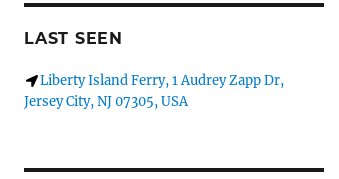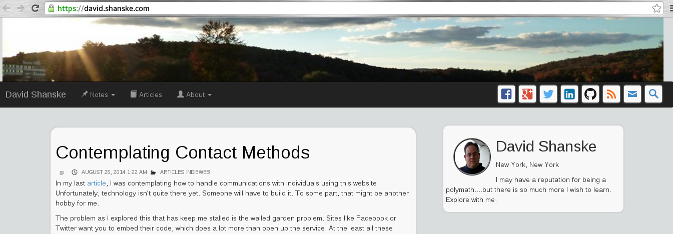Leaving the WordPress Project
A few years ago, there was a call for Component Maintainers, and I asked what a Component Maintainer would have to do. I never quite got an answer, other than, “You are now a component maintainer.” So, for a few years, I tried to be the Pingbacks and Trackbacks component maintainer.
There is only one problem with trying to guide a WordPress component. Someone other than you has to care. Namely, anyone guiding the project overall. I’m not a Core Committer. I’m not involved with anyone in a leadership position. So, I would periodically try to get interest, but none came. So, this week, I decided to tender my resignation. I couldn’t find anyone to tender it to, so I had to do it in chat to ask to be removed.
This is something I think of emblematic of the way the WordPress project has worked for me. You can open a ticket, put a patch in, get no guidance, wait 3 years, and then be told your simple patch is being punted because no one who has commit privileges cares enough to review it. Does not really make me feel like newcomers have support. In defense of this, the project is so big and used by so many it can be easy to get lost in the shuffle.
Pingbacks and Trackbacks are a subcomponent of Comments. Comments in general have not gotten much attention of late. There hasn’t been a comment component meeting in ages, or any major feature work in this area.
But, after years of not making any progress, the other reason I’m pulling back is the direction the WordPress project is going on. For two years, the project has had development of anything not related to the Gutenberg editor pretty much frozen.
At the 2018 State of the Word, it was announced that Phase 2 would turn the Navigation menus, Widgets, and other Theme Content areas to Gutenberg blocks. Phase 3, in 2020, will focus on collaboration and workflows. and Phase 4 on multilingual sites.
I was hopeful when it was implied that the feature freeze was over and that, regardless of having a focus and a goal, other improvements could now get some energy. But, I fear after two years of Gutenberg sucking the oxygen out of everything else, that will take a long time.
I nearly resigned before, when I was contacted and told that all component maintainers should be putting their efforts toward Gutenberg or Gutenberg related matters.
So, I’ve tried Gutenberg. I’ve written some posts with it on sites. I’m not going to knock it and say that it is horrible. I think it has some positives and negatives. But it is indicative of where WordPress is going and what audience it is looking for.
I’m just hoping the project doesn’t change so much that I decide I want to stop using the software entirely. I’ve invested a lot in extending WordPress. But I can’t try to be involved in that direction when it is not the way I want to go.


